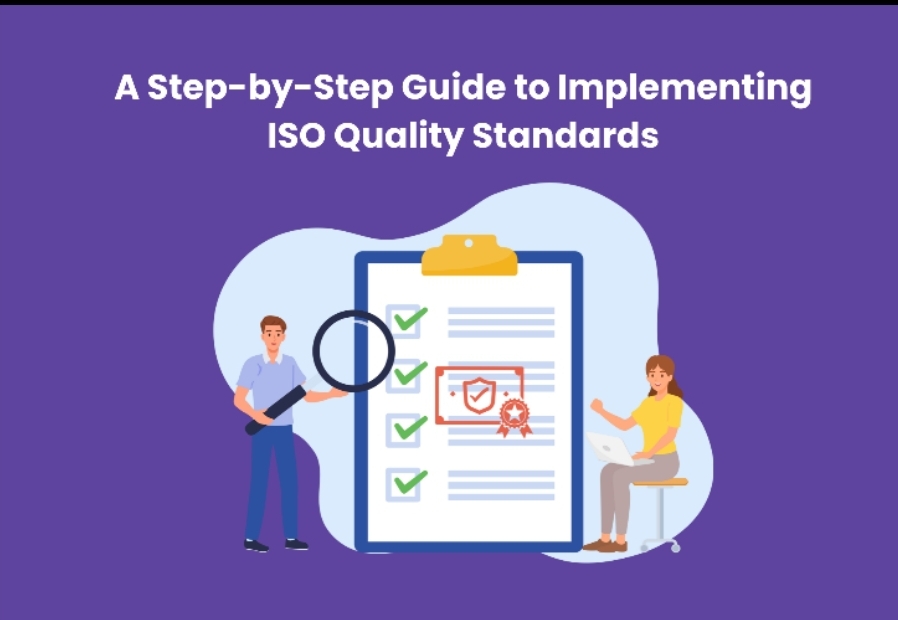Ensuring that your products or services meet the highest standards is not just a good practice but often a requirement for success. ISO quality standards, particularly ISO 9001, provide a comprehensive framework for achieving and maintaining quality in your organization. This step-by-step guide will walk you through the process of implementing ISO Quality Standards, including essential steps, considerations, and the availability of online training resources, such as “ISO 9001 Training Online,” to help you along the way.
Understanding ISO Quality Standards
ISO, or the International Organisation for Standardisation, is a worldwide organisation that creates and disseminates a wide variety of international standards to guarantee the reliability, safety, and effectiveness of goods, services, and infrastructure worldwide. The International Organisation for Standardisation (ISO) 9001 is one of the most popular and extensively used standards in quality management.
Step 1: Commitment from Leadership
The first step in adopting ISO quality standards, such as ISO 9001, is a company’s leadership pledging their full support. For the standard to be successfully implemented, top management must be actively involved and committed.
Step 2: Assemble a Team
It is crucial to choose a committed group or person to oversee the implementation process. The quality management system will be developed and implemented by this group. They should be aware of the ISO standard and the organisation’s operations.
Step 3: Gap Analysis
Complete a thorough gap analysis to see how your present procedures and methods stack up against the criteria of the ISO standard. What has to be fixed, added, or changed to conform to the standard may be better understood with the aid of this analysis.
Step 4: Develop Documentation
ISO 9001 relies heavily on having well-defined and documented processes and procedures. Make sure your business is operating by ISO quality standards by developing quality manuals, policies, and work instructions.
Step 5: Employee Training
Training is a crucial component of the efficient implementation of ISO quality standards. Because of the convenience of online tools like “ISO 9001 training online,” businesses can provide their staff with the information and skills they need to implement the new quality management system.
Step 6: Process Implementation
The moment has come to implement the processes and procedures you’ve outlined in writing. Ensure everyone is on board with the new quality management system, and provide them with the tools they need to succeed.
Step 7: Monitoring and Measurement
ISO 9001 is based on the principle of constant refinement. Set up metrics to track how well your procedures are doing and how efficient your quality management strategy is. Key performance indicators should be reviewed often to identify problem spots.
Step 8: Internal Auditing
The efficiency of your quality management system may be checked via internal audits. Audits like this are useful for spotting problems and pinpointing where adjustments need to be made. They also provide light on the degree to which the company is following ISO quality standards.
Step 9: Management Review
Maintain a schedule of management reviews to evaluate how well the quality management strategy is working. Executives may utilise the results of these audits to guide their decision-making and guarantee that the IT infrastructure supports the company’s long-term objectives.
Step 10: Certification
ISO 9001 certification might be sought only when a successful implementation has been completed. To ensure your quality management system is up to par with the norm, you’ll want to get it audited from the outside.
Step 11: Continuous Improvement
The road doesn’t stop with certification. ISO quality standards foster a culture of constant development. Every successful company must always be on the lookout for new methods to increase productivity and customer satisfaction. Your Quality Management System (QMS) must pass periodic recertification audits to prove it complies with the standard.
Conclusion
Using a systematic approach, your business may reap several rewards by adopting ISO quality standards like ISO 9001. It leads to higher quality, greater customer happiness, and a competitive advantage in the market. The procedures for obtaining ISO certification have also developed throughout time and now include the use of digital tools such as “ISO 9001 training online.” You may easily and efficiently train your staff on ISO standards with the help of these materials.



